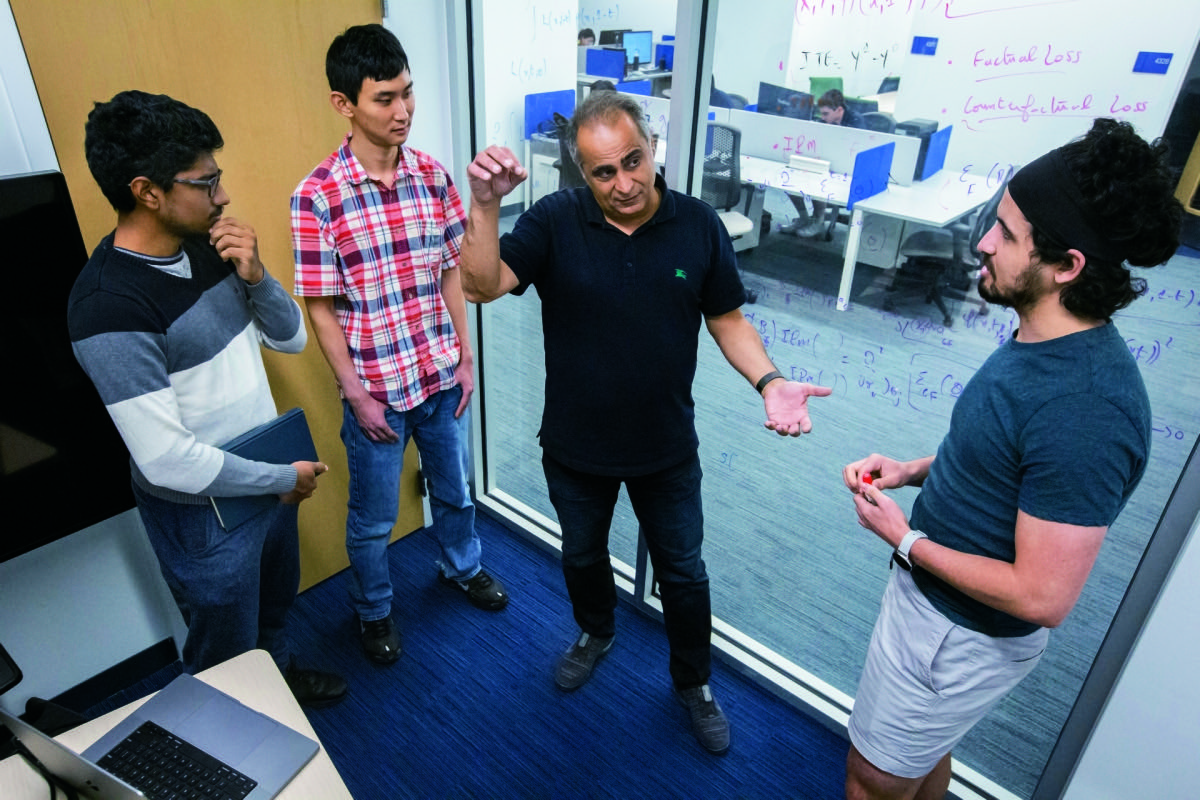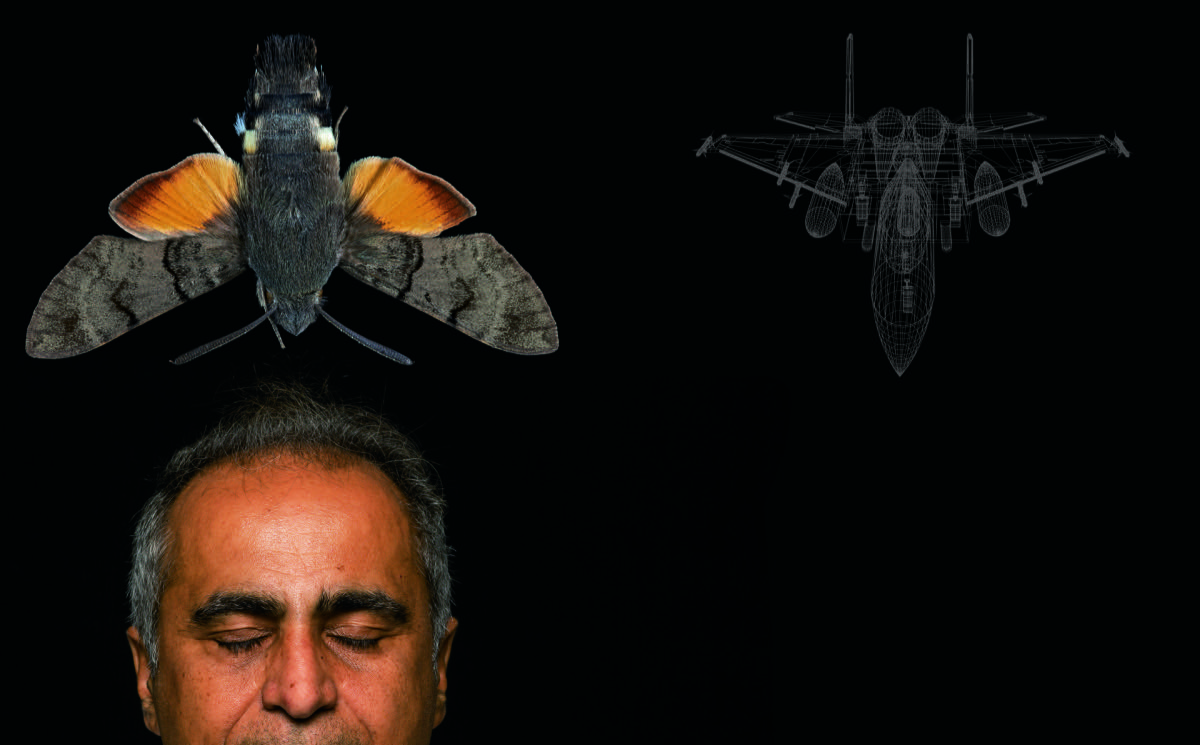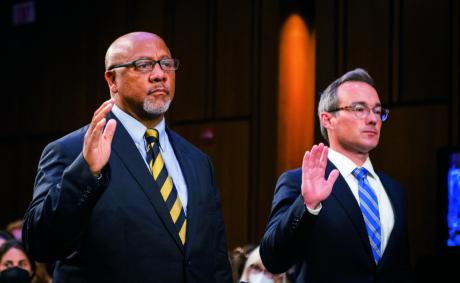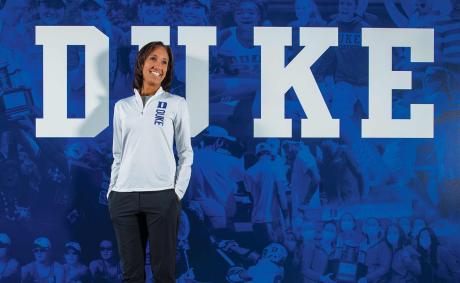It’s hard to keep up with Vahid Tarokh at a whiteboard. Not his writing, but his mind.
“You need to be well rested and maybe have a cup of coffee nearby,” says University of Michigan professor of engineering Alfred Hero. “His ideas are coming one after the other, just spraying out. For mere mortals like myself, it takes at least a few minutes to understand what he’s saying, and then you realize there’s a very interesting direction, even a Ph.D. thesis, behind this suggestion.”
Hero has been familiar with Tarokh’s work since the 1990s and began collaborating with him a few years ago. “When I work with him, I come [away] very energized, with lots of new ideas, making connections across the fields of engineering, physics, mathematics,” Hero says. “It’s just really a unique experience.”
Tarokh came to Duke in 2018 as the Rhodes Family Distinguished Professor of Electrical and Computer Engineering. “I build concepts,” he says. “I develop new algorithms and new foundational mathematics for doing engineering.” In practice, that means he applies math in new ways to create algorithms that he uses in software to accomplish something that was previously impossible.
One of his most famous concepts is space-time coding, which allows your voice to travel clearly to someone else’s phone via a wireless network. Tarokh invented space-time coding at AT&T in the late 1990s with AT&T colleagues including Robert Calderbank, who is now the Charles S. Sydnor Distinguished Professor of Computer Science at Duke. The paper they published about the technique, in 1998, has since been cited by other researchers more than 10,000 times.
“Vahid is able to do things that other people can’t,” says Calderbank, who recruited Tarokh to AT&T. “There are plenty of very technical mathematicians and plenty of engineers, but there are very few people who do both. He’s just an extraordinary mind at work.”
Tarokh left AT&T in 2000, craving more intellectual independence. “I wanted to have the freedom to do what I like to do, to pursue what I like to pursue,” he says. “Some of the things I do, I just do for fascination, not for the bottom line.” He was on the faculty at MIT and Harvard before coming to Duke, a move Calderbank helped facilitate.
Since leaving industry for academia, Tarokh’s fascination has led to projects as wide-ranging as modeling insect flight, predicting rare events and helping self-driving cars “see” better.
Tarokh has been intensely curious since he was a boy growing up in Iran, always wanting to know how things worked. “When my dad would buy me a toy,” says the Tehran native, “instead of playing with the toy, I would open it with screwdrivers. I wanted to know what [was] inside.”
In the late 1970s, the Iranian Revolution upended Tarokh’s life. “Things were horrible,” he says. “They killed my dad. They wanted to send us to the battle front.” With his family, Tarokh fled to Turkey and then Switzerland. He eventually landed in Ontario, Canada, where he earned a Ph.D. in electrical engineering from the University of Waterloo.
He credits his escape from Iran and his ability to complete his education to his mother and his uncle. “When you get somewhere, you always owe it to people who helped you on the way,” he says. “I owe my life to them.” Family remains important to Tarokh, who has a brother in Cary and sisters in Boston and Austin, Texas.
He has no children of his own, but he is dedicated to his students and celebrates their successes as a parent would. “To him, we are his kids,” says fifth-year graduate student Yuting Ng. “I feel like all the students can talk to him and tell him we are struggling with this or very happy with this.” She says he is also an excellent mentor and teacher, encouraging his students to generate their own ideas and debate as a group rather than simply following his lead.
Ng is working with Tarokh on a project to develop ways to predict extreme events, such as massive earthquakes, tsunamis or stock market crashes. If you want to predict the weather, you look at data from past events to construct models for the future. But rare events don’t generate enough data for that.
Tarokh addresses this problem in several ways, including using data from not-quite-extreme events, such as earthquakes that are merely large. He also uses mathematical theories describing the distribution of rare events to generate what he calls synthetic or augmented data. He uses that data to train artificial intelligence models, which he has designed to take into account the fact that variables change over time – for example, the movement of tectonic plates or rising sea levels.
If that all sounds challenging – well, Tarokh likes a challenge. “If I was thinking about something very technical and I couldn’t figure out how to do it,” Calderbank says, “I might think of suggesting to Vahid that he couldn’t do it, and he’d want to prove me wrong.”
In another challenging project, Tarokh is collaborating with other researchers to figure out how insects fly and how to model that flight. He is fascinated by insects’ ability to change directions in an instant, zipping forward, then up, then hovering.

He’s particularly interested in how insects receive incoming signals – a few molecules of floral scent or a glimpse of a predator’s shadow – and respond with neural activity that directs muscles to fly toward a flower or away from a bug-eating bat.
He is also working to understand the relationships among flight in different species, considering the range of weights, body types and wing shapes. If he could model bee flight, could that be translated into butterfly flight?
Although Tarokh is motivated by curiosity, not potential applications, the insect project could lead to a number of technologies, such as multimodal airplanes that could switch to a different type of flight to maneuver in a tight space, or flying robots that could enter mines to reach trapped miners.
Some of Tarokh’s other work includes projects to help locate focal areas in the brain for epileptic seizures, to pinpoint illegal fishing activity at sea and improve MRI imaging.
The theme that ties together these seemingly dissimilar projects is the ability to make sense of incomplete, distorted or noisy data or signals coming from different sources. In the case of space-time coding, he figured out how to combine signals of varying quality coming from different antennas to create a clear voice on the other end of the line. In the case of self-driving cars, he’s using artificial intelligence to take an incomplete image, such as a stop sign partially obscured by a tree, and turn it into a clear one.
Despite being able to bring together techniques from different disciplines to solve problems that have stumped others, Tarokh’s colleagues describe him as modest. “He’s really bright, he’s really clever, but he’s not arrogant,” says his student Ng.
His collaborator agrees. “Here’s this exceptional researcher, an exceptional thinker, and yet he gives credit to others,” says Hero. “Even though he thinks faster than most of us and he’s somebody who could hold 10 ideas in his mind at once, he doesn’t flaunt it.”
For his part, Tarokh seems to relish turning the spotlight to others. “My work, it would not be possible without the great students that I have,” he says. “I have been through so many things in my life, ups and downs, that I understand it’s always about other people. If they become successful, I enjoy it. When they do the work, why should I take their credit? If I share it with them, I like it because I enjoy giving. That’s the way I am.”






